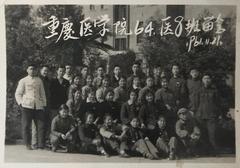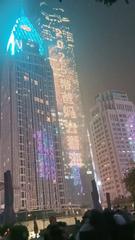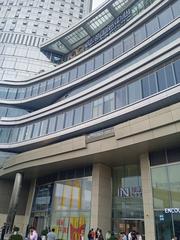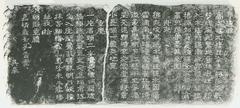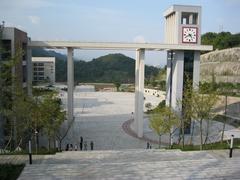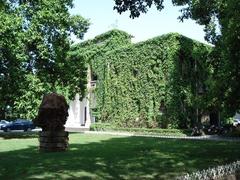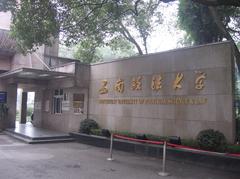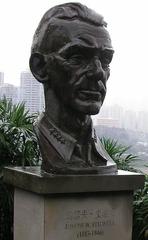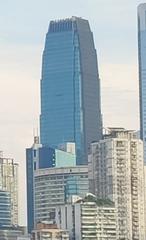Beishan Cliffside Carvings: Complete Guide to Visiting Hours, Tickets, History, and Chongqing’s Historic Sites
Date: 04/07/2025
Introduction
The Beishan Cliffside Carvings, located about 2 kilometers north of Dazu County in Chongqing, China, are a masterful testament to ancient Buddhist art and religious syncretism. Dating back to 892 CE during the late Tang Dynasty and reaching their apex in the Southern Song Dynasty, these carvings feature over 10,000 statues set within more than 290 grottoes and niches along an extensive cliff face. Now part of the UNESCO World Heritage-listed Dazu Rock Carvings, Beishan is celebrated for its refined artistry and the blending of Buddhist, Taoist, and Confucian motifs. For travelers, history enthusiasts, or anyone interested in cultural heritage, this guide provides a detailed overview of Beishan’s history, artistic features, visiting logistics, and practical travel tips. For further background, see Top China Travel, TripChinaGuide, and UNESCO World Heritage.
Table of Contents
- Introduction
- Historical Origins and Development
- Artistic and Religious Significance
- Key Carving Clusters and Iconography
- Inscriptions and Historical Records
- Visiting Hours, Tickets, and How to Get There
- Visitor Facilities and Accessibility
- Practical Travel Tips
- Frequently Asked Questions (FAQ)
- Visual & Media Resources
- Related Articles
- Conclusion
- References
Historical Origins and Development
The Beishan Cliffside Carvings originated in 892 CE, spearheaded by Wei Junjing, the military governor of Changzhou, during the late Tang Dynasty (UNESCO). Over the next 250 years, the site expanded through the Five Dynasties and Ten Kingdoms period and flourished in the Southern Song Dynasty. Contributions from local officials, monks, nuns, and laypeople enriched the carvings, resulting in a communal artistic legacy that now encompasses nearly 10,000 statues across 290 niches (Silk Road Travel; Wikipedia).
The site’s growth mirrors the political fragmentation and religious pluralism of the era, culminating in an extraordinary ensemble of religious art. Beishan is one of the largest clusters within the Dazu complex, featuring both monumental and finely detailed carvings (TripChinaGuide; ETripChina).
Artistic and Religious Significance
Religious Syncretism
Beishan is renowned for its unique combination of Buddhist, Taoist, and Confucian iconography. While the majority of sculptures are Buddhist, particularly Bodhisattvas like Guanyin, the site also features Taoist deities and Confucian sages. This tri-faith synthesis is rare in Chinese grotto art and reflects the inclusive spiritual ethos of medieval Dazu (China Highlights).
Stylistic Evolution and Craftsmanship
Early carvings from the late Tang Dynasty exhibit robust, lifelike figures, while subsequent Southern Song Dynasty works display more delicate lines and serene expressions. The technical mastery is evident in both relief and in-the-round sculptures, many of which retain traces of their original vibrant paint (Chinatripedia; Silk Road Travel).
Key Carving Clusters and Iconography
Fowan
The principal cluster at Beishan, Fowan, comprises more than half of the site’s statues arranged in horizontal bands and niches. Notable works include large Buddhas flanked by bodhisattvas and guardian kings. The No. 136 Turning Wheel Sutra Repository Cave is especially significant, with intricate carvings symbolizing the eternal nature of Buddhist law (Silk Road Travel).
Other Clusters
- Yingpanpo and Guanyinpo: These areas feature serene depictions of Guanyin and other bodhisattvas in contemplative postures.
- Northern Tower Temple and Fo’er Cliff: Here, visitors find a blend of Buddhist and Taoist carvings, including rare images of Taoist immortals and small rock-cut pagodas (TripChinaGuide).
Thematic Diversity
Beishan’s carvings portray not only divine beings but also secular and mythological scenes, such as daily life, didactic stories, and representations of filial piety—underscoring the site’s role in promoting both spiritual and ethical teachings (China Discovery).
Inscriptions and Historical Records
The Beishan Cliffside Carvings are distinguished by a wealth of inscriptions, including the historically significant “Wei Junjing Stele” (895 AD) and the “Ancient Texts of the Classic of Filial Piety.” More than 100,000 Chinese characters are etched throughout the Dazu Rock Carvings, providing invaluable insights into the patrons, artisans, and religious motivations behind the works (Chinatripedia).
Visiting Hours, Tickets, and How to Get There
Visiting Hours
- Open Daily: 8:00 AM – 5:30 PM (last admission at 4:30 or 5:00 PM; check for holiday variations)
- Peak Seasons: Spring and autumn are ideal for comfortable weather and lighter crowds (Trip.com).
Tickets
- Standard Adult Ticket: 70–120 RMB (varies by season and platform)
- Discounts: Available for students, seniors, and children (valid ID required)
- Combined Tickets: Bundles for Beishan and other Dazu sites, such as Baodingshan, provide better value.
- Where to Buy: At the entrance or online via official platforms and major travel websites
Getting There
- By Public Bus: Regular departures from Chongqing’s main bus stations (e.g., Caiyuanba, Chenjiaping) to Dazu County, then a local bus or taxi to Beishan.
- By Train: High-speed trains from Chongqing West Railway Station to Dazu Railway Station (1–1.5 hours), followed by a short taxi ride.
- By Car/Taxi: About 2 hours’ drive from central Chongqing.
- Tour Packages: Local agencies offer convenient group tours with transportation and guides (Just China Tours).
Visitor Facilities and Accessibility
- Paths and Layout: Paved and well-marked, but some sections have steps and uneven surfaces.
- Wheelchair Access: Limited; main paths are accessible, but certain areas are challenging.
- Restrooms and Shops: Available near the entrance and along the main route.
- Audio Guides and Tours: Available in multiple languages for an additional fee, highly recommended for deeper understanding.
- Signage: Bilingual (Chinese/English) labels for major carvings and features.
Practical Travel Tips
- Best Visit Duration: 1.5–2.5 hours for Beishan alone; longer if combining with Baodingshan.
- Dress Code: Modest clothing is recommended; comfortable shoes are essential.
- Weather: Bring sun protection in summer and a jacket in cooler months; rain gear is advisable year-round.
- Photography: Non-flash photography permitted (restrictions may apply in sensitive areas); tripods generally not allowed.
- Respect the Site: Do not touch carvings or make loud noises; maintain the cleanliness and sanctity of the area.
- Food and Drink: Snack stalls near the entrance; more dining options in Dazu town.
- Cash and Payment: RMB preferred; some credit cards accepted at ticket offices.
Frequently Asked Questions (FAQ)
Q: What are the Beishan Cliffside Carvings visiting hours?
A: Daily from 8:00 AM to 5:30 PM, with last admission at 4:30 or 5:00 PM.
Q: How much are tickets?
A: Standard adult tickets range from 70–120 RMB; discounts for students, seniors, and children.
Q: How do I get to Beishan from Chongqing?
A: By bus, train, or car; travel time is typically 1.5–2.5 hours.
Q: Are guided tours available?
A: Yes, English- and Chinese-speaking guides and audio guides are available for a fee.
Q: Is the site accessible for visitors with disabilities?
A: Main paths are accessible, but steps and uneven terrain present challenges in some areas.
Q: Can I take photos?
A: Yes, but flash photography is prohibited to protect the artwork.
Visual & Media Resources
For a richer experience, explore virtual tours and high-quality images of Beishan online. Use image alt text such as “Beishan Cliffside Carvings Bodhisattva statue” or “Turning Wheel Sutra Repository Cave carvings at Beishan” for accessibility and SEO. Interactive maps and video walkthroughs can further enhance your visit or website content.
Related Articles
Conclusion
The Beishan Cliffside Carvings stand as a lasting monument to the artistic, spiritual, and cultural achievements of medieval China. Recognized for their universal value and exceptional craftsmanship, they offer an immersive experience for visitors seeking to understand the depth and complexity of Chinese heritage. With accessible facilities, guided tours, and comprehensive interpretive resources, Beishan is a must-visit for anyone exploring Chongqing’s historical landscape.
To enhance your visit, download the Audiala app for audio guides, travel tips, and exclusive updates. Stay connected via our social media channels for the latest in cultural tourism and related site information. For the most current hours and ticketing, always check Trip.com or China Travel before your visit.
References and Further Reading
- Top China Travel
- TripChinaGuide
- ETripChina
- UNESCO World Heritage
- Silk Road Travel
- China Highlights
- Just China Tours
- Trip.com
- China Travel
- China Discovery
- Chinatripedia

